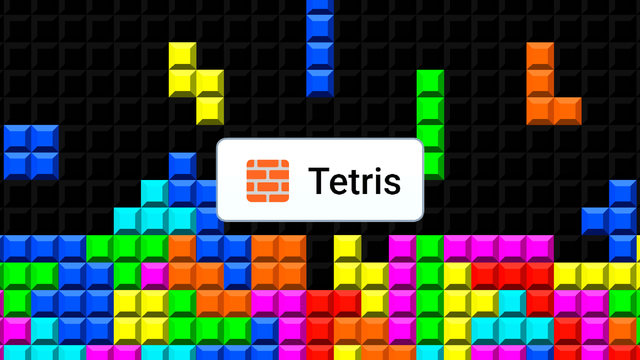After a lifetime of suffering at the hands of certain blocks, and waiting frantically for the saving grace of certain other blocks, I’ve decided that it’s time to finally put each Tetris piece (or tetromino) in its place. The best way to do that, of course, is by ranking each block based on its usefulness and personality, as determined by me, Known Tetris Expert Jordan Mallory™.
Through a system that is in no way arbitrary or riddled with personal bias, each of the seven tetrominoes present in Tetris Effect and its ilk have been graded, analyzed, re-graded, re-analyzed, and then graded one more time for good measure, resulting in the list you are about to read. If you feel that any of these conclusions were arrived at in error, please share your thoughts in the comment section below. Peer review is the backbone of all scientific research, after all.
 #7: The S Block
#7: The S Block
While seasoned Tetris players can force the S Block into usefulness, the block itself provides no true flat surfaces, making it the most finicky tetromino to utilize properly. It’s also a devout contrarian on Twitter, and thinks that poor video games are primarily the result of developer laziness, so it obviously belongs at the bottom of the list.
 #6: The Z Block
#6: The Z Block
The Z Block has all of the same gameplay problems as the S Block, only facing the other direction, and this makes more of a difference than one might assume at first glance.
The letter z is way cooler than the letter s, as evidenced by Dragon Ball Z, the coolest thing ever. Therefore, despite having the same utility problems as the S Block, and despite its troubling opinions on the importance of funding public libraries, the Z Block ranks slightly higher than its reversed sibling.
 #5: The L Block
#5: The L Block
Capable of filling a divot while simultaneously providing three lateral blocks for the line above, the L Block is a highly useful mid-game piece vital to the production of clean Tetris combos.
Its primary weakness is in situations where it cannot be place horizontally without covering empty space, or when building vertically is a risky endeavor. Still, the L Block can either provide vital closure in most scenarios, or create surfaces for S and Z Blocks to cleanly fit onto. The L Block’s favorite film is Three Men and a Baby.
 #4: The J Block
#4: The J Block
As was the case with the S and Z Blocks, the J and L Blocks share a close, complicated relationship, not unlike that of popular vocaloids Kagamine Rin and Kagamine Len. The J Block maintains all of the L Block’s usefulness and shortcomings, although it does improve on the original design slightly by representing the first letter of my name — this can be said of no other tetromino.
 #3: The Square Block
#3: The Square Block
The Square Block is a dependable, reliable foundation for early-game Tetris, as well as a useful reset tool for managing mistakes mid/late-game. On an open field, the Square Block can be correctly placed almost anywhere — in either corner to build towards a four-line clear, or somewhere in the middle to begin a pyramid at ultra-high levels of play.
Later in the game, the Square Block helps facilitate what I call the “new line zero” technique, where existing lines are ignored in favor of a new, imaginary starting point. While clearing this new line over and over, the player also does what they can to reduce the number of “old” lines below, eventually returning the entire board to a manageable state.
The Square Block helps make this possible by being flat on all four sides, allowing it to consistently close gaps over disjointed rows. It also represents wholeness and unity through its perfect squareness, which can help the player achieve the sort of mental clarity needed to handle tense moments in Tetris.
 #2: The I Block
#2: The I Block
Also known as the “line piece,” the I Block is what makes a four-line clear (or Tetris) possible. Without it, players would be unable to clear more than three lines at a time, and at that point why even bother? People don’t show up for three-line clears, people want four-line clears. People wanna hear an NES sound chip flip the F out as four perfect lines are erased from existence. You can’t do that without the I Block.
 #1: The T Block
#1: The T Block
The T Block is always useful. If there’s a gap, it can bridge it. If you need to square up an edge, the T Block can do that for you. If you need to create surfaces for Z and S Blocks to mooch off of, the T Block is the star of the show. You can even spin a T Block into spaces that would be impossible for other tetrominoes to reach; a technique known as the eponymous “T-Spin” maneuver.
An inherent desire to be useful is what defines the T Block, from its in-game personifications to its personal life, where it can often be found volunteering at soup kitchens and animal shelters.
Therefore, I hereby grant the title of Best Tetromino™ to the T Block — long may it save our impatient behinds, long may it help us correct our mistakes. All hail the T Block!


